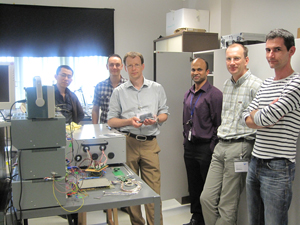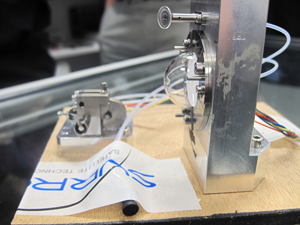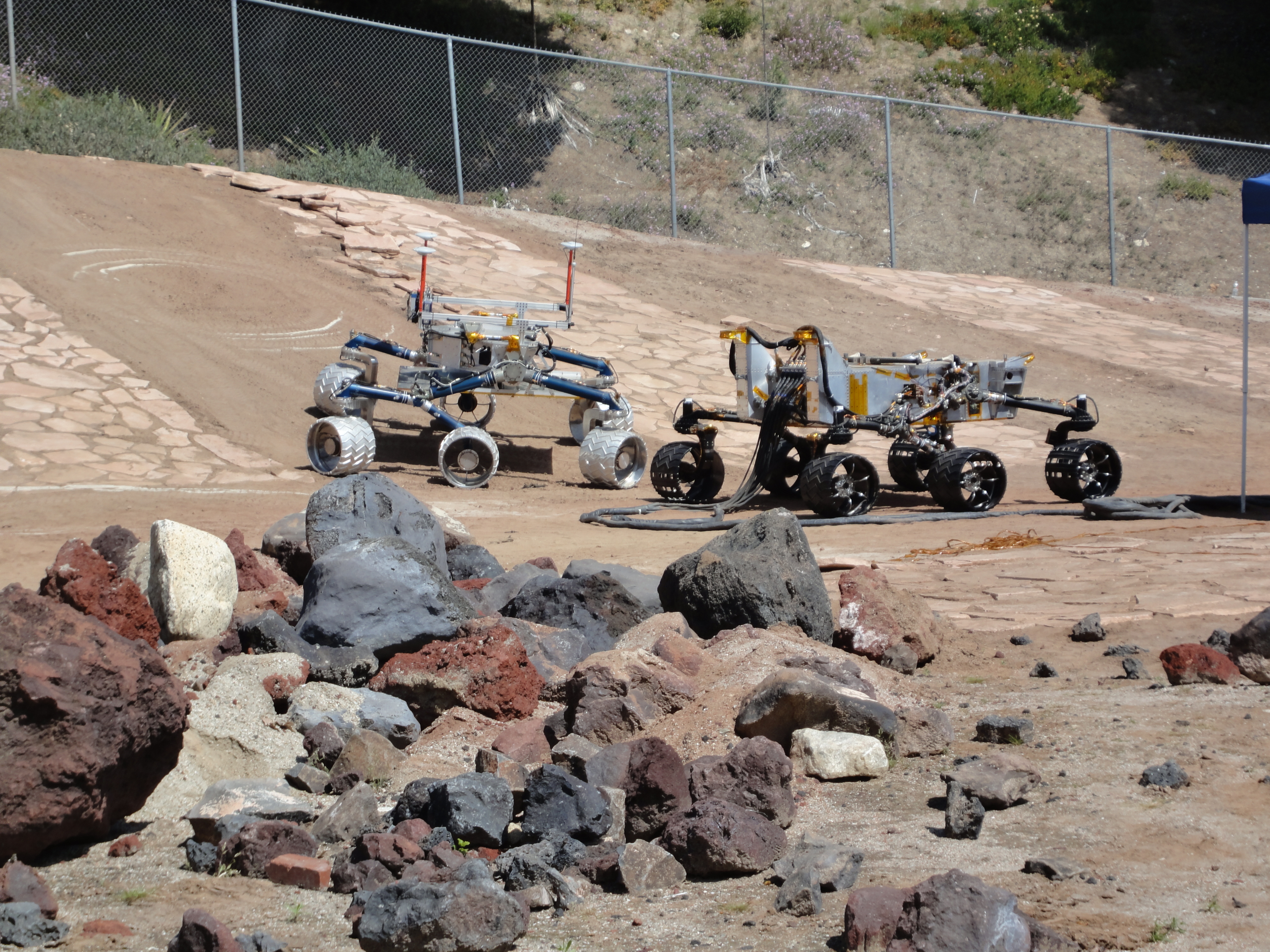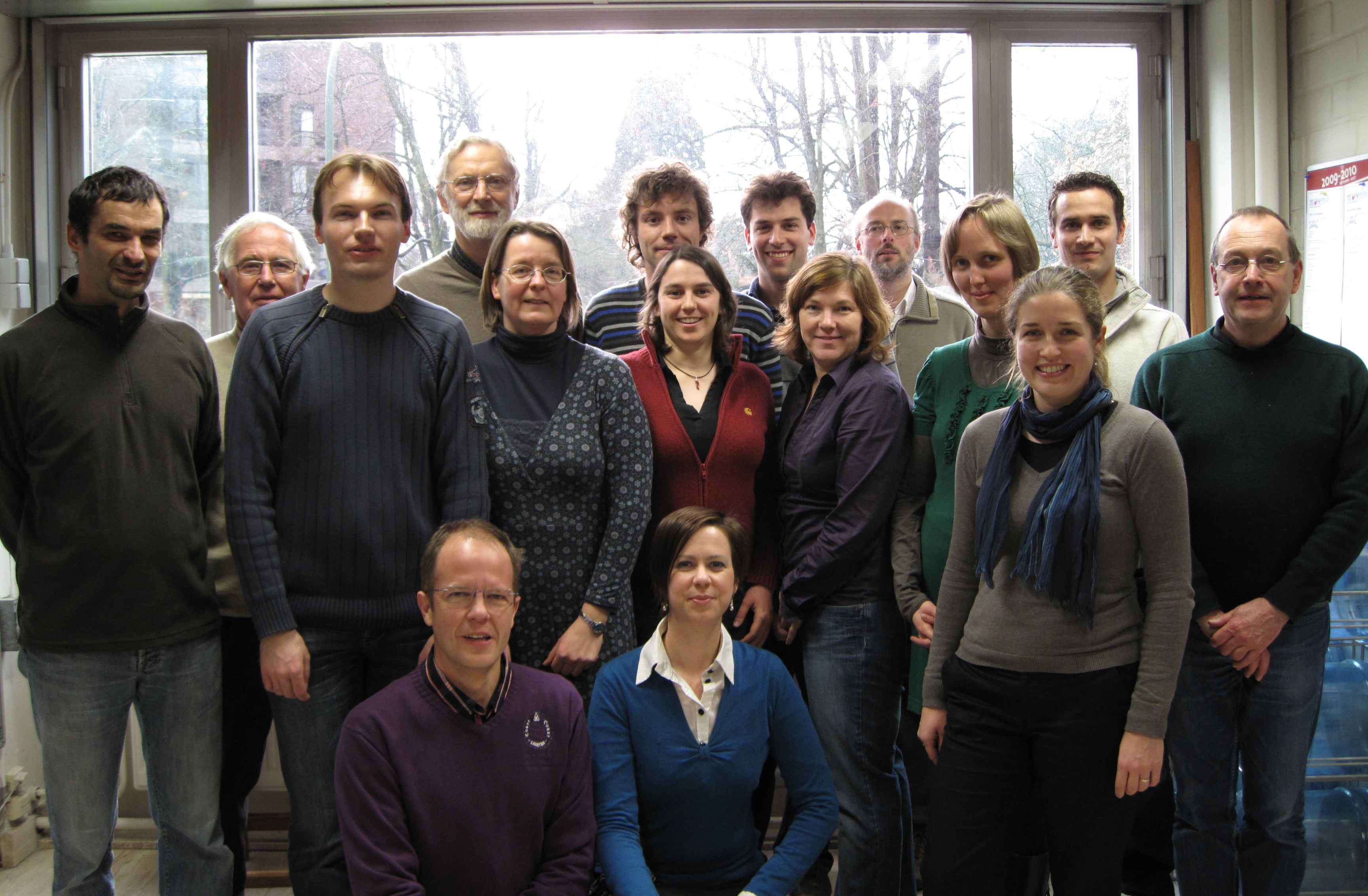 |
||||||||||
|
Webstory: 2011 Season's Greetings from NOMAD's international team 23 December 2011 - The NOMAD teams in various countries are preparing for a well earned Christmas and New Year break before the 'final push' to Preliminary Design Review in March next year. It's going to be very busy the first quarter of 2012, in order to ensure that all the design reports are finished and all documentation prepared to prove to ESA that NOMAD is on track for the launch in January 2016.
The IFSI team in Italy gather to wish you Buon Natale!
The Open University team in the UK wishes you a Merry Christmas
The team at Instituto de Astrofísica de Andalucía, Spain say 'Felix Navidad' with style!
Joyeux Noël et Bonne Année from the team at CSL, Belgium. The BIRA-IASB (Belgium) NOMAD team wishes you Prettige Feestdagen/ Joyeuses Fêtes.
Electronics working session at MSSL, UK 24 November 2011 - The central NOMAD 'computer' and onboard software is being designed and will be built at IAA in Spain. But electronics within the infra-red and UV channels are developed separately (according to heritage electronics from previous space proven hardware) at the OU, UK and IASB- BIRA in Belgium. In order to make sure that all the hardware and software are compatible with each other IAA, IASB-BIRA and OU personnel went to MSSL (an OU electronics sub-contractor) for an electronics meeting. MSSL is part of UCL set out in the beautiful Surrey countryside in southern England, in an old country house. The meeting was held in the old library and lunch was enjoyed on the terrace, despite the chilly November weather.
The meeting was the first between the Spanish and British electronics teams and a lot of topics were discussed. The collaboration promises to be challenging but fruitful. Education and Public Outreach Presentation at MIRA 22 October 2011 - Our Dutch speaking EPO officer Sofie Delanoye gave a presentation about NOMAD and ExoMars at MIRA. Interest from the general public in our work is very important to the NOMAD team, and Sofie will be giving more presentations in the future. They will be listed on the public outreach page (available in all languages). If you'd like to have NOMAD presented at your organisation, or school, contact the EPO team as described on the outreach page. Presentations can be arranged in French, Dutch or English. Scientists from the NOMAD Team at DPS-EPSC - SWT3 Meeting 3-7 October 2011 - Scientists from the NOMAD Team were present at the DPS-EPSC meeting held in Nantes (France) last week. During the meeting two talks on the instrument and its scientific objectives were given : the NOMAD instrument: description and status of the instrument, its 3 channels (SO, LNO, and UVIS), description of the observation modes, partners involved the NOMAD science objectives: using all 3 channels and different observation modes (solar occultation and nadir mapping) The SWT3 meeting was also held during the DPS-EPSS benefitting from the presence of several of our international co-Is. Discussions about the resolution of UVIS and the possible detection of SO2 were held. T. Clancy and M. Wolff gave a very instructive presentation on the determination of ozone and aerosols from the UV spectral range, giving some insights on the science that will be derived from the UVIS channel.
31 August 2011 UVIS Lead Co-I Dr Manish Patel spent 2 days at BISA at the end of August to discuss scientific and technical developments of the UVIS instrument for the ExoMars TGO satellite. There were many topics up for discussion - such as how to optimise the size of the nadir viewing telescope, how to foresee calibration of this when TGO is in orbit around Mars, and the requirements that should be placed on the temperature of the instrument. Though a powerful UV-Visible instrument, UVIS may only occupy 125x165x95mm and weigh 550g, so the challenges are numerous! 5 August 2011 An exciting discovery made with the HiRISE instrument (a US-Swiss collaboration) on the Mars Reconnaissance Orbiter (NASA) was announced today. Their high-resolution images, taken over several years and examining different seasons, show traces of liquid water flowing on Mars! These flows are seen during the southern hemisphere summer, on steep sides of craters that reach very warm temperatures (for the surface of Mars). Image credit: NASA/JPL-Caltech/Univ. of Arizona It is still too cold, and the atmospheric pressure too low, for this to be pure water. It would need to be brine (water saturated with salt). This is exciting news for the Trace Gas Orbiter 2016, because a followup instrument to HiRISE - this time called HiSci - is onboard alongside NOMAD. Follow up images will be possible and perhaps NOMAD will be able to obtain infra-red spectra of the evaporation of these flows and determine if it really is water!
25 June 2011 ESA was present at the 49th international Salon of Aeronautics and Space held at The Bourget near Paris from the 20 to 26 June 2011. ESA had one entire wall dedicated to ExoMars, the 2016 orbiter and EDL and the 2018 rover mission.
23 June 2011 NOMAD was present with 2 posters describing the instrument and its scientific objectives at the inauguration of the "Cradle of Life" exhibition, held at the Museum of Natural Sciences (Brussels) on 23rd June. The exhibition was hosted by the European Science Foundation and COST - European Cooperation in Science and Technology, as part of the celebrations of the International Year of Chemistry. The Exhibition explored how chemistry is providing clues to two of the great unanswered scientific questions: How did life begin on Earth? Is there life elsewhere in the Universe?
For more info on the COST actions in Belgium 10 June 2011 ExoMars Trace Gas Orbiter is a close collaboration between the European Space Agency (ESA) and the National Aeronautics and Space Administration (NASA) in the United States of America. NOMAD is the only instrument selected for the payload with a European PI. As such it is harder for NASA to take into account the needs of NOMAD when they hold discussions about, for example, the Science Operations Centre. In such cases, NASA assigns an Investigation Scientist to represent the instrument. NOMAD has been assigned Dr. Michael Mischna, a scientist at JPL working on Mars atmospheric modelling. He came over for the NOMAD SWT2 and we organised a separate meeting to acquaint him better with the NOMAD team and the instrument itself.
IASB-BIRA Head of Engineering, Eddy Neefs, shows the spare model of SOIR to Michael Mischna and the NASA TGO Project Scientist, Mark Allen. It is a pleasure and an honour to have Michael working with us to ensure NOMAD and its team maximise their synergy with the NASA instruments and their teams.
9-10 June 2011 6 months after the first NOMAD Science Working Team meeting was held in Granada, Spain (see below), it was the turn of the PI country, Belgium, to organise a meeting. The Belgian Scientific Policy Office in Avenue Louise hosted the scientists and engineers of the NOMAD team from around the world for an update on the technical status of the instrument development, discussions on important decisions and presentations on science relevant to the preparation of the Trace Gas Orbiter mission to Mars.
One of the most important areas of scientific preparation is radiative transfer. Radiative transfer is the name given to the way radiation passes through an atmosphere - being absorbed, scattered, (re)emitted. Several of the partner institutes have their own radiative transfer code and we are looking at how similar the results of a common situation are, and trying to understand any differences. The groups have varying levels of expertise in infra-red and UV-visible modelling and with nadir or occultation measurements. Since NOMAD can observe in both wavelength regions and in perform both nadir and occultation measurements, a wide variety of code will be used to analyse the data when we finally receive it, sometime in 2017! It was not all work and no play, however, as we took our team to enjoy typical Belgian fare Aux Armes de Bruxelles.
17 May 2011 NOMAD is part of the payload on the ExoMars Trace Gas Orbiter. The spacecraft should be inserted into a 400km orbit around Mars. But of course, errors can always occur, and orbit trajectory modification is far from simple - in fact it is rocket science. Since Mars may have extinct or extant life and traces thereof, and in fact one of the goals of ExoMars is the search for proof of this, any mission to Mars must comply with strict planetary protection guidelines. This is to be certain that no contamination from Earth is sent there. This means that all parts of the NOMADinstrument must be cleaned with special alcohol, or heated to kill bacteria, and that the clean rooms must follow very strict rules to keep the equipment clean. In order to understand the challenges facing the NOMAD team, our partners from Spain, Italy and industry all need to follow special training. Our partners in the UK, at OU, are already experts since they built Beagle 2. On the 17th May a Planetary protection level 0 and 1 course was held at IASB-BIRA in Brussels. The course was given by Gerhard Kminek from ESA/ESTEC - an expert in Planetary Protection issues.
Some members of the team will also need to follow higher level training later in the year. 2 May 2011 At the end of April an update meeting was held at the Open University campus in Milton Keynes, UK. NOMAD team members from IASB-BIRA and representatives of Lambda-X attended a meeting on the preliminary design of new telescope optics for the UVIS channel of NOMAD. We took advantage of our visit to peek at the impressive clean rooms set up at the OU for the first ExoMars lander concept (Humboldt was cancelled 2 years ago, but the OU had already built a prototype of UVIS for this lander). We also saw the electronics boards under development to read out the new UVIS detector and the selector motor that will choose between the two fibre optics cables - one from the wide field of view nadir telescope and one from the narrow field of view solar occultation telescope. 21 March 2011 The NOMAD PI and co-PI attended the 2nd OSWT last week at the Jet Propulsion Laboratory (JPL) in Pasadena, CA. The choice of the orbit inclination for the ExoMars Trace Gas orbiter was the subject of intense discussion, and the value of 74° was finally decided upon, allowing both for good coverage in both solar occultation and nadir . The method to follow in order to best align the two instruments performing solar occultation observations, NOMAD and MATMOS, was also discussed. We were shown the Mars Yard where the MSL Curiosity rover is being tested. A dummy rocky Mars surface has been reconstructed to check the capabilities of the rover. 16 February 2011 The NOMAD Science Team was well represented at the Fourth Mars Atmospheric Modelling and Observation Workshop, held in Paris 8-11 February. The PI - Ann Carine- presented NOMAD to the scientific community, and all the other instruments on ExoMars TGO 2016 also gave presentations. The week was dedicated to discussion of latest measurements, analyses and results, as well as improvements in circulation models that attempt to explain what the various instruments observe at the Red Planet. We took advantage of this meeting to hold a small NOMAD team meeting, and we enjoyed a wonderful dinner during a cruise on the Seine. 12 January 2011 The NOMAD team at BISA wishes you all a very Happy New Year. All the best in your endeavours. This year NOMAD will go to Preliminary Design Review. This is a huge milestone in the development of the instrument that takes place at the ESA/ESTEC offices in the Netherlands in the last quarter of this year. So NOMAD has an exciting and challenging year ahead.
Shown here (standing) are Roland, Emiel, Bojan, Dennis, Ann-Carine, Arnaud, Séverine, Yannick, Lori, David, Sofie, Sabrina, Jeroen and Eddy and (squatting) Eddy and Rachel at the BISA New Year reception. News & press releases 2014 & 2015
|
|||||||||
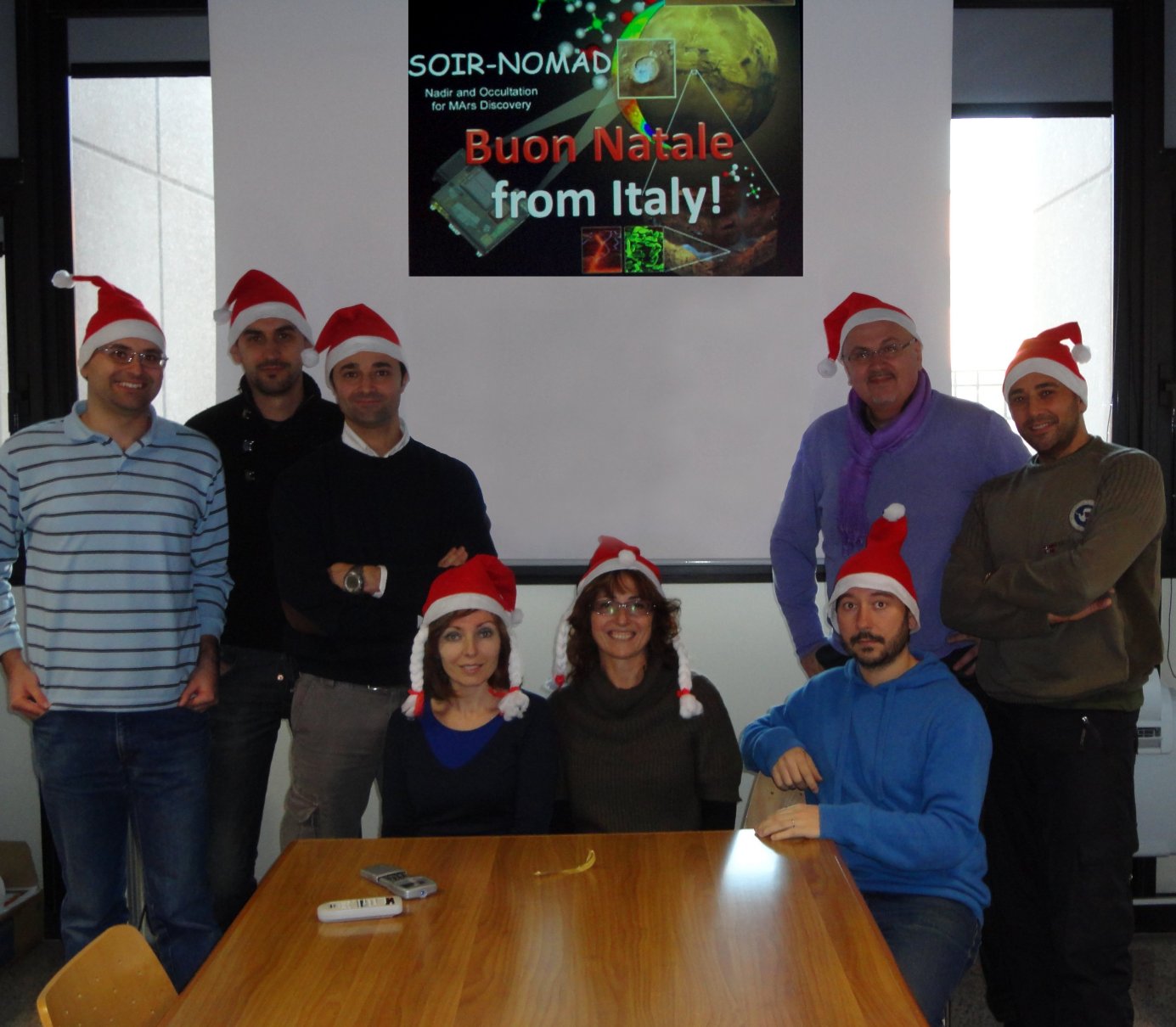
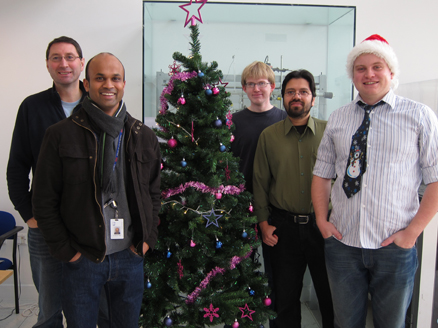
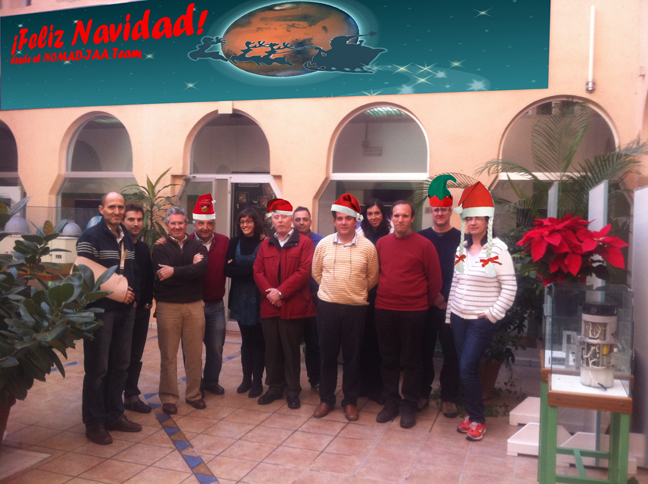
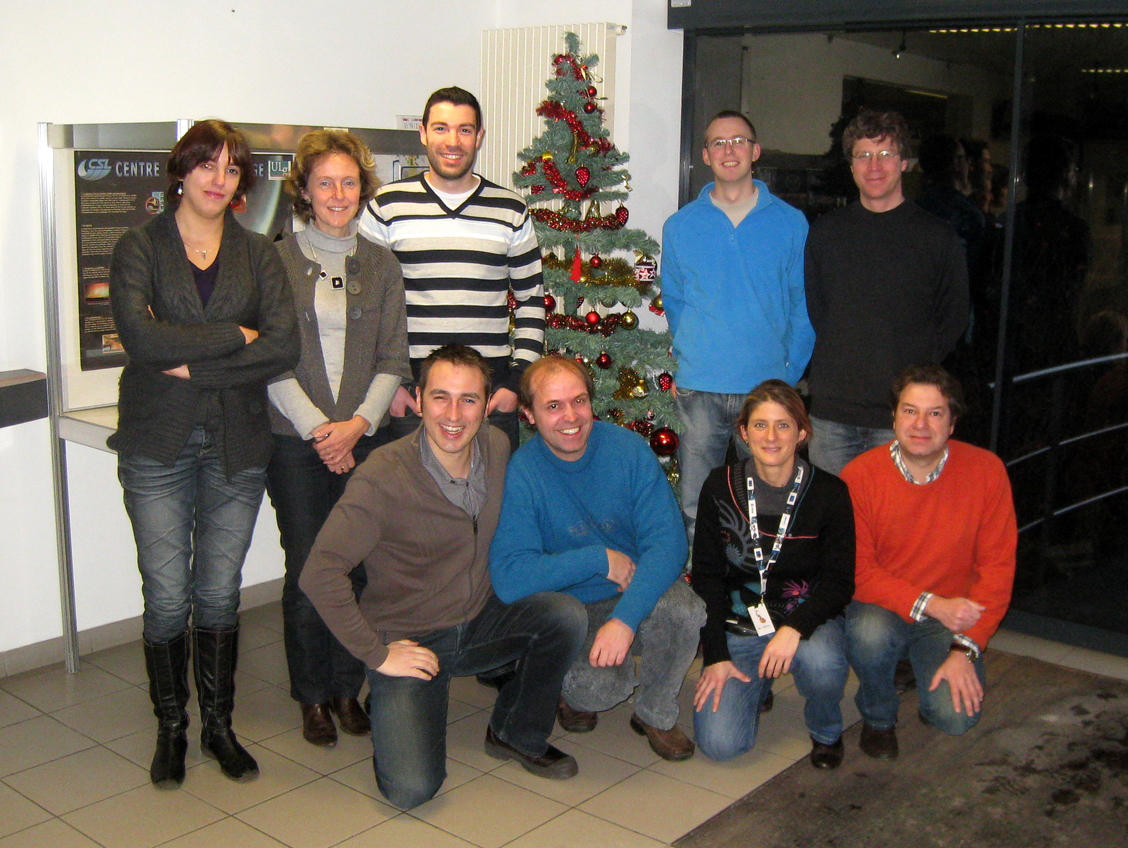
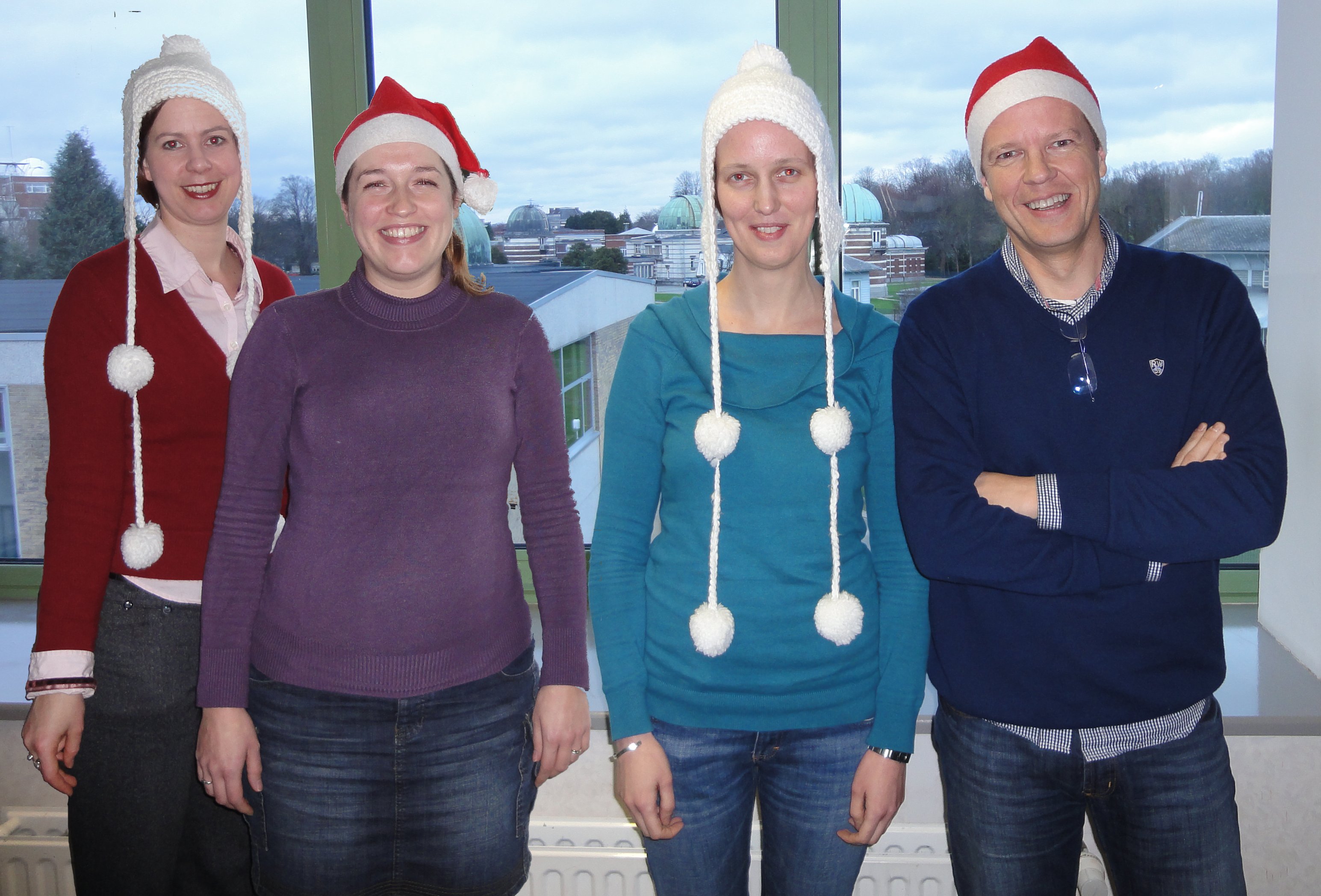
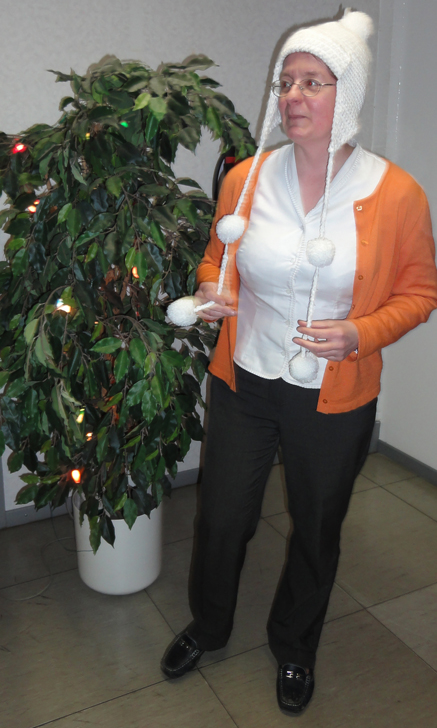
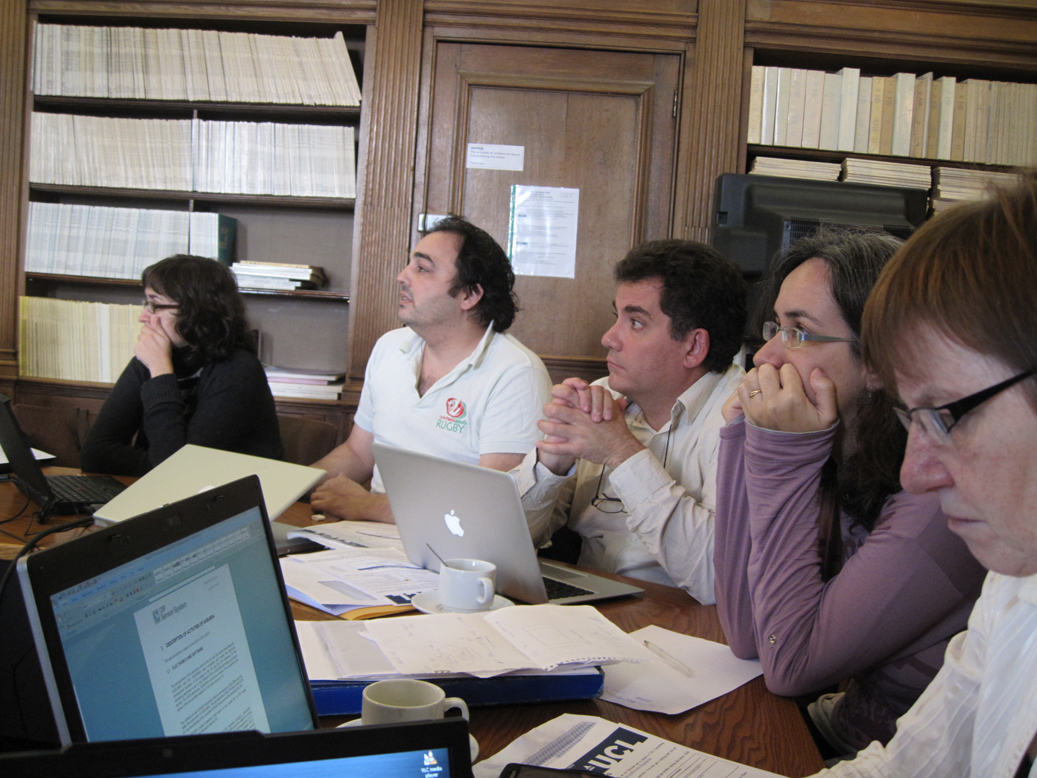
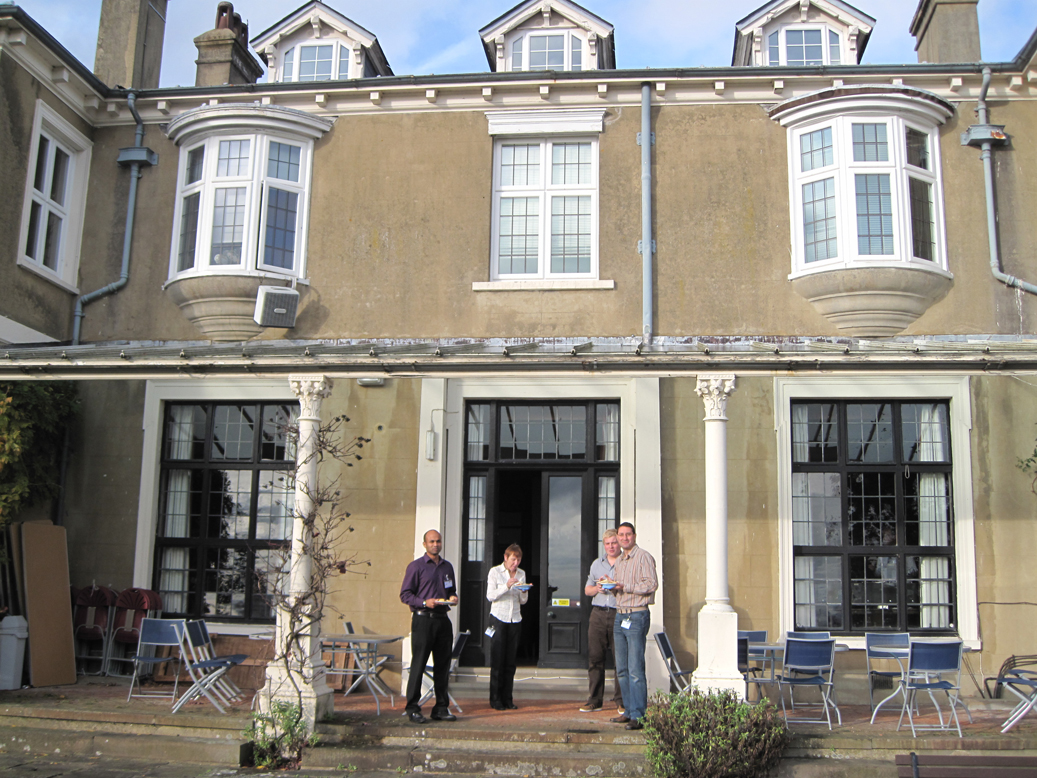
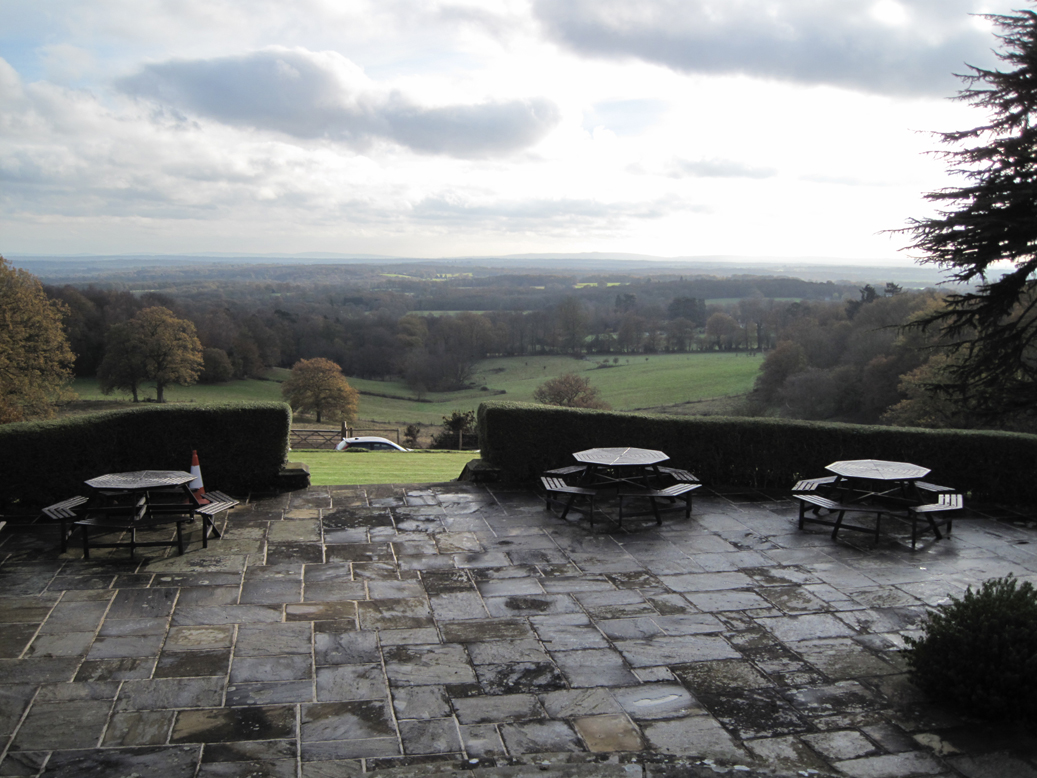
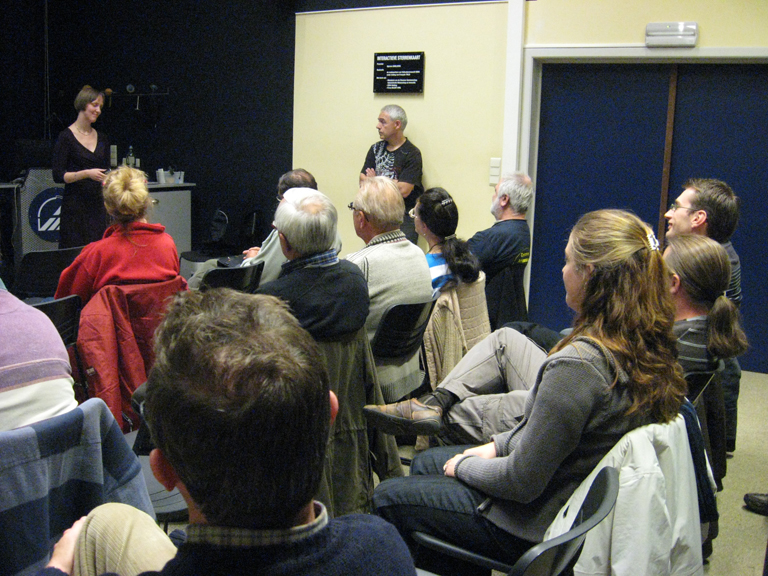
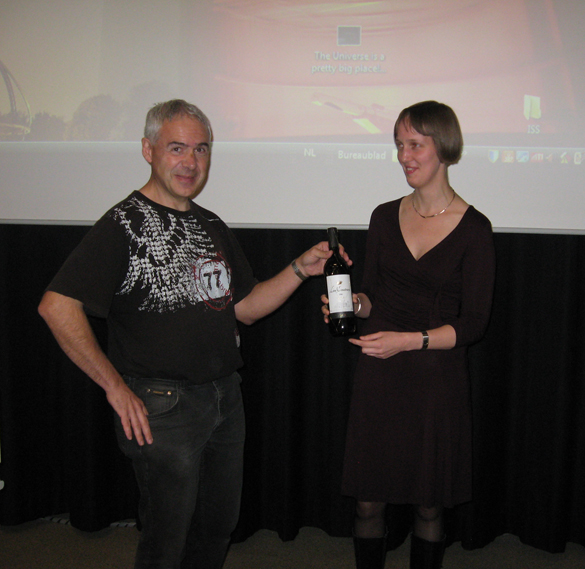






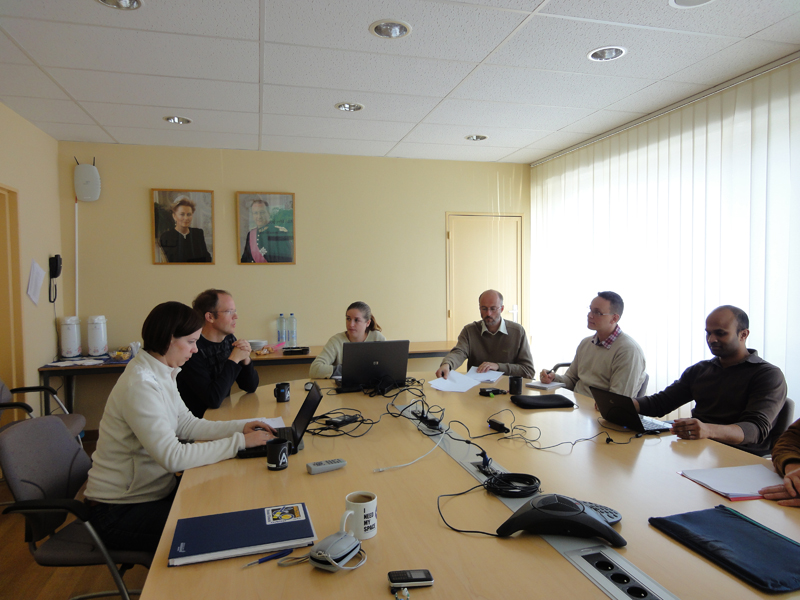
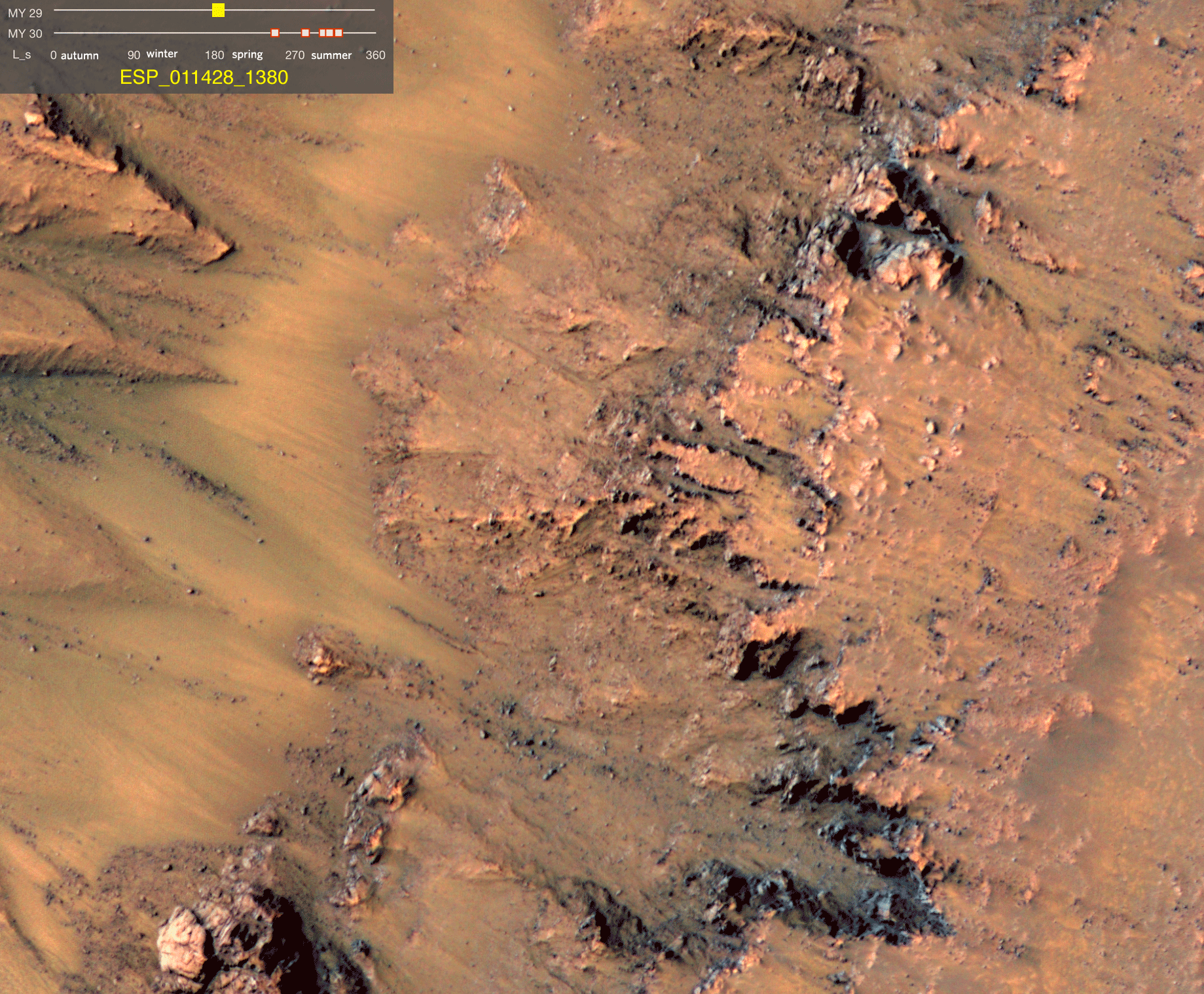
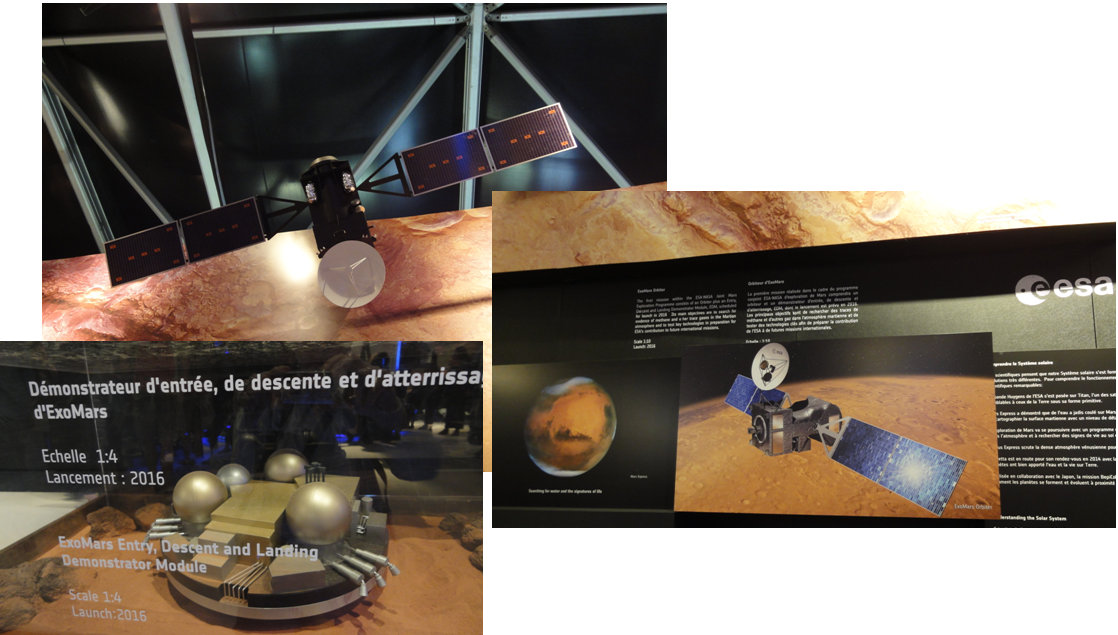
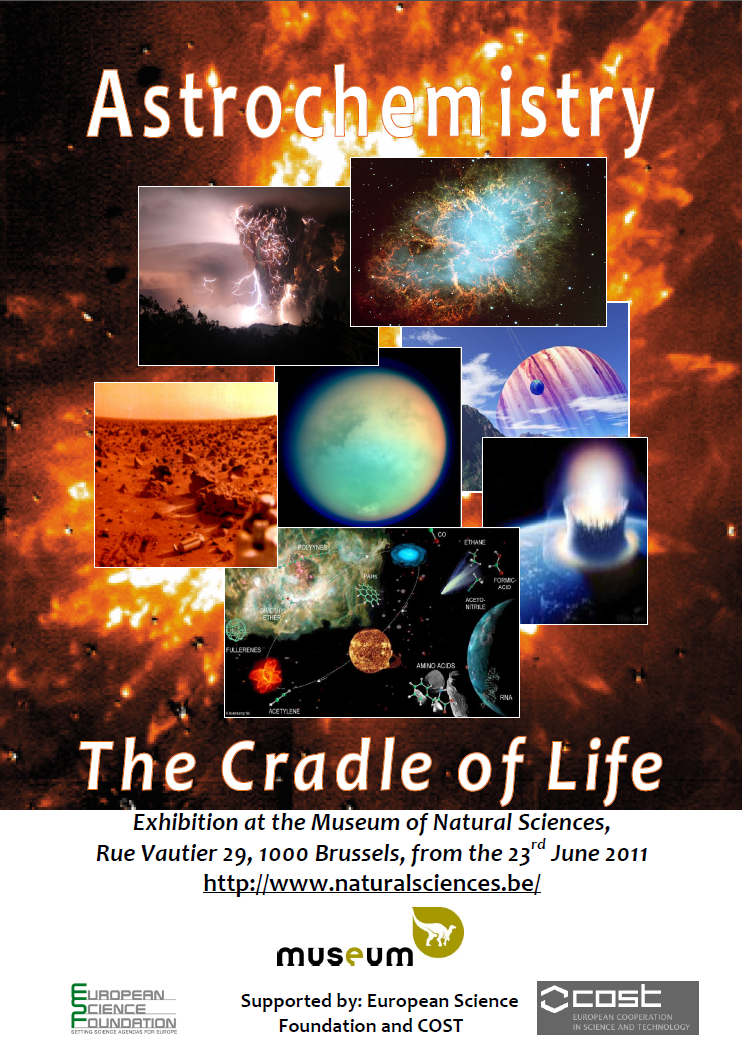
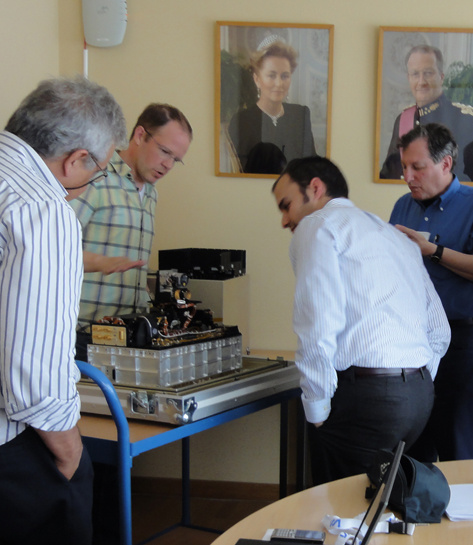
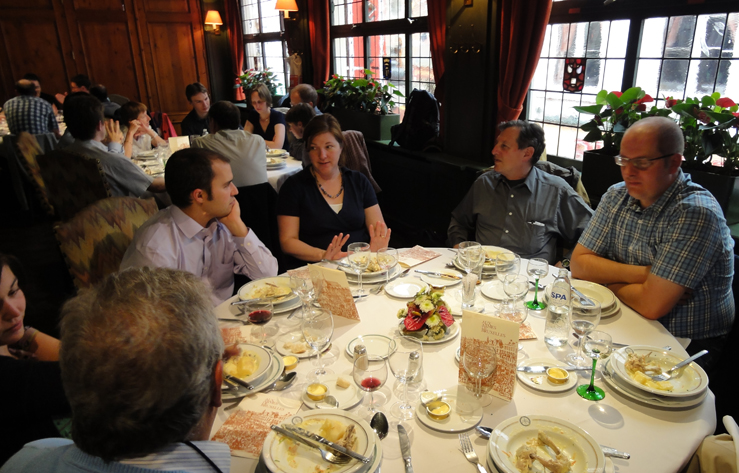
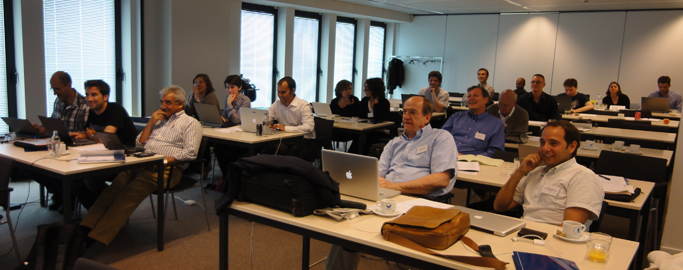
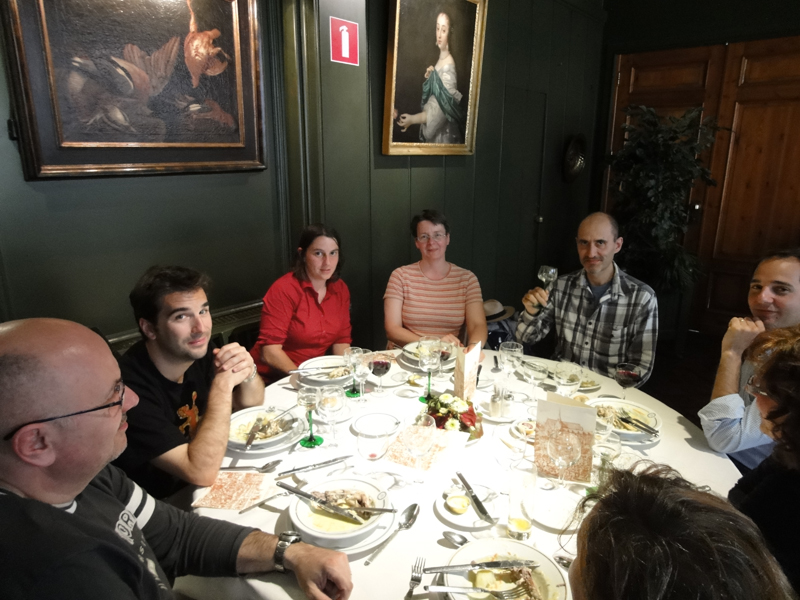
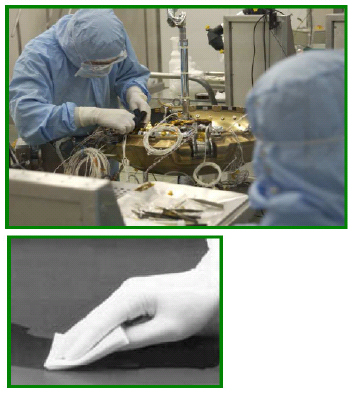 Images from Beagle 2 PP procedures
Images from Beagle 2 PP procedures